Get PeakVisor App
Sign In
Search by GPS coordinates
- Latitude
- ° ' ''
- Longitude
- ° ' ''
- Units of Length

Yes
Cancel
Share ×

Scan the QR code and open PeakVisor on your phone
❤ Wishlist ×
Choose
Delete
Located in the very north of the country, mostly above the Arctic Circle, Lapland is one of the four main tourist regions of Finland. It is an ideal region for outdoor activities as it contains many long hiking trails, free wilderness huts, ski resorts, and 1,462 of the 1590 named mountains in Finland. The highest peak in Lapland is Halti (1,365 m / 4,478 ft), and the most prominent peak is Taivaskero (809 m / 2,654 ft).
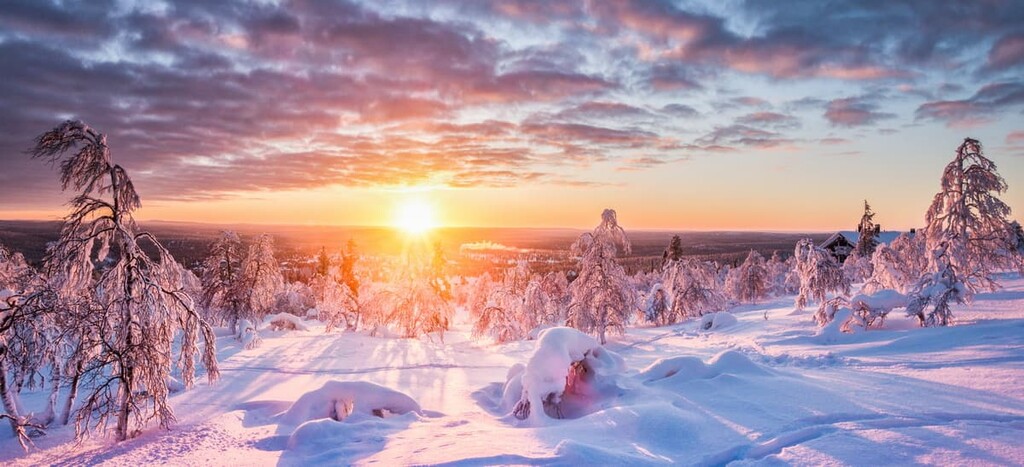
The name Lapland is an international version of the name of the region, which most likely comes from English or Swedish. It consists of two words: "Lapp" and "land."
As far as the meaning of this name goes, “land” is fairly straight-forward.” Meanwhile, “Lapp” is the English name of the Indigenous peoples of the region. However, “Lapp” is considered to be an outdated and derogatory word, so Sámi is the preferred name in English of Lapland’s Indigenous peoples. As far as the meaning of this name goes, “land” is fairly straight-forward.” Meanwhile, “Lapp” is the English name of the Indigenous peoples of the region. However, “Lapp” is considered to be an outdated and derogatory word, so Sámi is the preferred name in English of Lapland’s Indigenous peoples.
Furthermore, the Sámi themselves call their homeland Sápmi, rather than Lapland. Sápmi, which refers to the entirety of Lapland, means the "Land of the Sámi".
The name of the region in Finnish is Lappi or Lapin maakunta. Neighboring Norwegians, Swedes and Russians have their own name for the region. If you suddenly find that you know Latin, you can also read in old geography books in Latin that the name for Lapland was Lapponia.
Lapland is one of Finland's 19 regions, located in the north of the country. The only place farther north is the Arctic Ocean.
In fact, the Arctic Ocean is separated from Lapland by just a few hundred km (around 120–150 mi) of territory in Norway, with which Lapland borders to the north. To the east, it borders Russia, and to the west, Sweden. It also shares a border with the region of North Ostrobothnia to the south.

Lapland covers 25 percent of the national territory of Finland or about 100,366 sq. km (38,751 sq. mi) of 338,455 sq. km (130678 sq. mi) of the whole of Finland. At the same time, it is one of the most sparsely populated areas in the world, with a population density of around two people per sq. km (0.3 sq. mi). The total population of the region is 176,658 people as of 2021.
Within the region, the area is divided into 21 communes into the northern, western, eastern, and southern parts.
Interestingly, Lapland was considered part of the Swedish province of a similar name, Lappland, because from 1104 until 1809 Finland was part of Sweden. Lappland passed to Finland after it became part of the Russian Empire (and then left it in 1917 to form an independent country).
In a broader sense, Lapland has no clear political borders. It is a name for the whole northern part of the Scandinavian Peninsula, including the northern parts of Norway and Russia (i.e., the area of historical and present Sámi settlement).
To drive from Helsinki, the capital of Finland, to Rovaniemi, the largest city in Lapland, by car takes about 10 hours (812 km / 504 mi). The trip by bus (state bus Matkahuolto or low-cost OnniBus) takes about the same amount of time. You can also travel to Rovaniemi by Finnish VR trains or fly by Finavia airplane company. There are also regional airports in Kittilä, Ivalo, Enontekiö, and the united Kemi-Tornio airport.
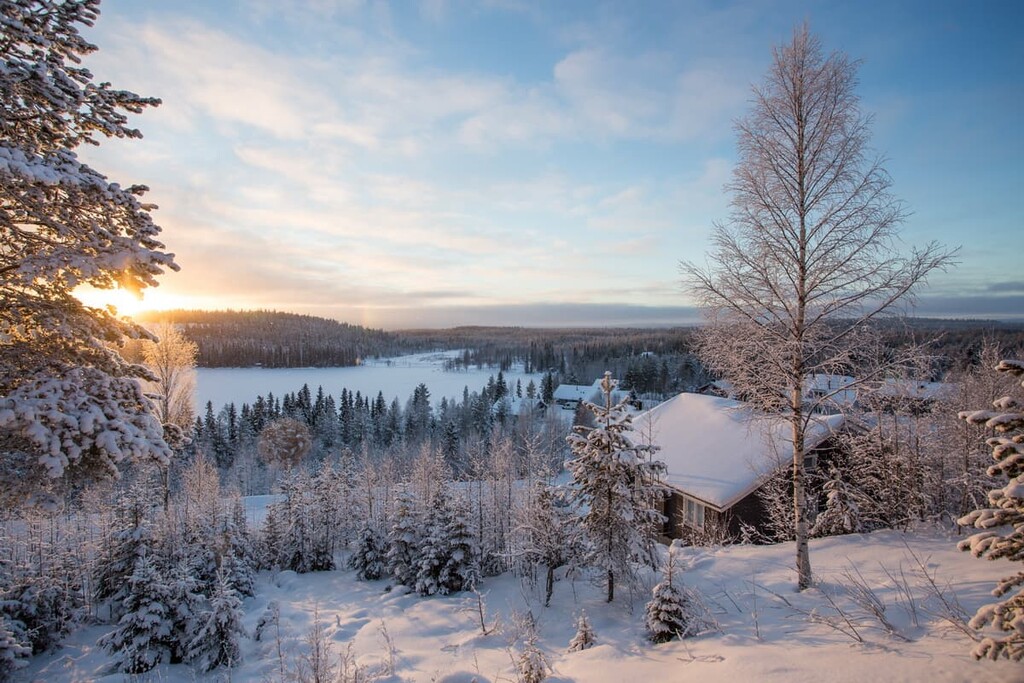
In Lapland itself, the best way to get around is by car and bus. There are some trains, too, but they are not available everywhere.
According to the Köppen Climate Classification, the entire territory of Finland, including Lapland, belongs to the subarctic climate, which is characterized by dry and warm summers and cold and snowy winters. I've been to Finland in all four seasons—I can assure you that this climate classification system tells the truth.
However, winter comes earlier here than in the southern part of the country. The first frosts and snowfalls may be as early as late September. For those who are going to hike here, it is also important to remember that the snow covers the tops of the mountains even earlier than late September. Winter lasts for seven months until April, and then it takes time for the snow to melt. Also, Lapland has cold winters down to -30 degrees Celsius (-22 Fahrenheit).
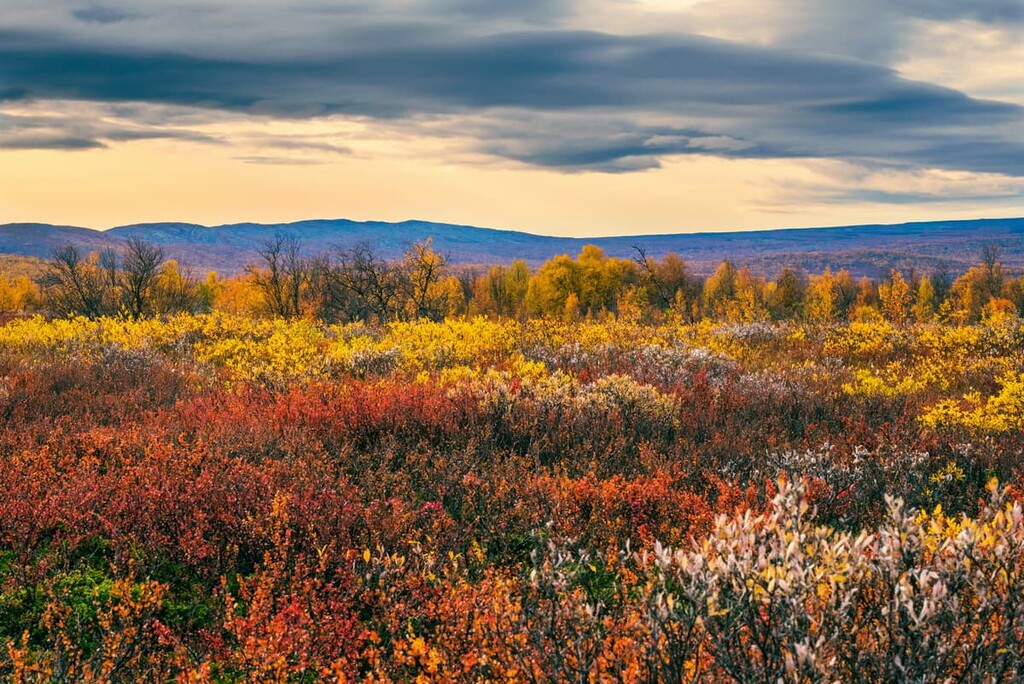
Summer really starts in the second half of June and lasts only 2 to 2.5 months. Even in July, it may be quite cold and rainy—up to +10 degrees Celsius (+50 Fahrenheit), although there are waves of fairly hot weather up to +25–30 degrees Celsius (+77–86 Fahrenheit), it rarely lasts longer than a week. Once I counted five whole days without clouds or rain here in the north. It was the happiest week of my life (well, almost a week).
When it comes to summer sports such as hiking or mountain biking, the period from mid-June to mid-August is the best time to go to Lapland, although most people come here in September, despite of already cold and rainy weather, to see the incredible tundra blossoms of yellow, orange and red colors. Therefore, September is officially considered the most popular month for hiking in Lapland and Finland.
If you like snow, you can come at any time in winter, there will be plenty of it everywhere.
It is also important to know about the polar night and the midnight sun. These are the periods of a year during the two months in summer and winter when the sun does not go down over the horizon line and does not rise from behind it—yes, 24 hours a day for 60 consecutive days in Lapland it is either completely light or dark. In my opinion, sunshine is a plus and darkness is a minus, however, this is something you will need to see for yourself.
Beneath the entire territory of Scandinavia, there is a segment of the Earth's crust called the Baltic Shield, so the geology of this region is, in a sense, homogenous.

Nevertheless, in the Finnish part of Lapland, we can define three geological layers of this segment of the Baltic Shield: the Karelian domain that occupies the central part of the region, the Kola domain in the northeast near Inari Lake, and the Scandinavian Caledonides in the north-west near the border with Norway.
The main rocks found in Lapland are various types of granites, gneisses, shales, and quartzites. By the way, these are the oldest rocks in Europe between 1.5 and 3 billion years old.
In the forests of Lapland, you can often see huge boulders with no other rocks around. These are traces of a glacier that once covered the whole of northern Europe. In fact it is often said that there is no modern technology that can move even one such stone as easily as a glacier because these boulders weigh many, many tons.
You can find my points of inspiration for your first trip to Lapland—history, the culture of the local population, food, nature, natural phenomena like northern light or hiking and biking trails — but above all, of course, the main inspiration is the overall landscape of the region, which cannot be overstated in its glory

Let's figure out exactly what makes up this landscape and what to expect from your trip. The five main features of the Lapland landscape are:
Long chains of low mountains (mostly hills) are the first and main feature of the landscape of Lapland. These mountains are more commonly known as fells and they are so valuable and recognizable that they have been listed as one of Finland's 27 national landscapes. Most of the hills are concentrated in the northwest of the region, which is therefore also called Fell-Lapland
The rugged northern nature of Lapland is an ideal environment for reindeer, which have been bred here for thousands of years by the Sámi. Throughout the region, you can see enormous pastures and special fences for keeping herds of reindeer together, as well as old farms run by the Sámi.

The third major feature of the region, which is less known by travelers than the first two, is Lapland’s gorges and canyons.
The deepest gorge in the region, which reaches a depth of 220 m (721,7 ft) is Isokuru Gorge. It is located in Pyha-Luosto National Park in the geographical center of the region. However, if you go to other places, you will almost certainly find a gorge or canyon because there are many of them everywhere in Lapland.
Like other parts of the country, much of Lapland is covered in pine and spruce forests. The difference is that there are not just forests, but old-growth forests that are up to 400 years old because many of them have not been cut down for logging.
In addition to pines and spruces, there are also many birch forests and mixed forests in Lapland. Forests cover the southern and eastern parts of the region, which is also called Forest-Lapland.
When we mention the region’s rich water resources, we are talking about three things here: many large swamps, all the longest rivers in Finland including Kemijoki (550 km / 341 mi), Tornionjoki (522 / 324 mi km), Tenojoki (344 km / 213 mi), Iijoki (330 km / 205 mi) and Ounasjoki (298 km / 185 mi), and lakes, including the second largest lake in the country, Irajarvi Lake, in the commune of Irajarvi.
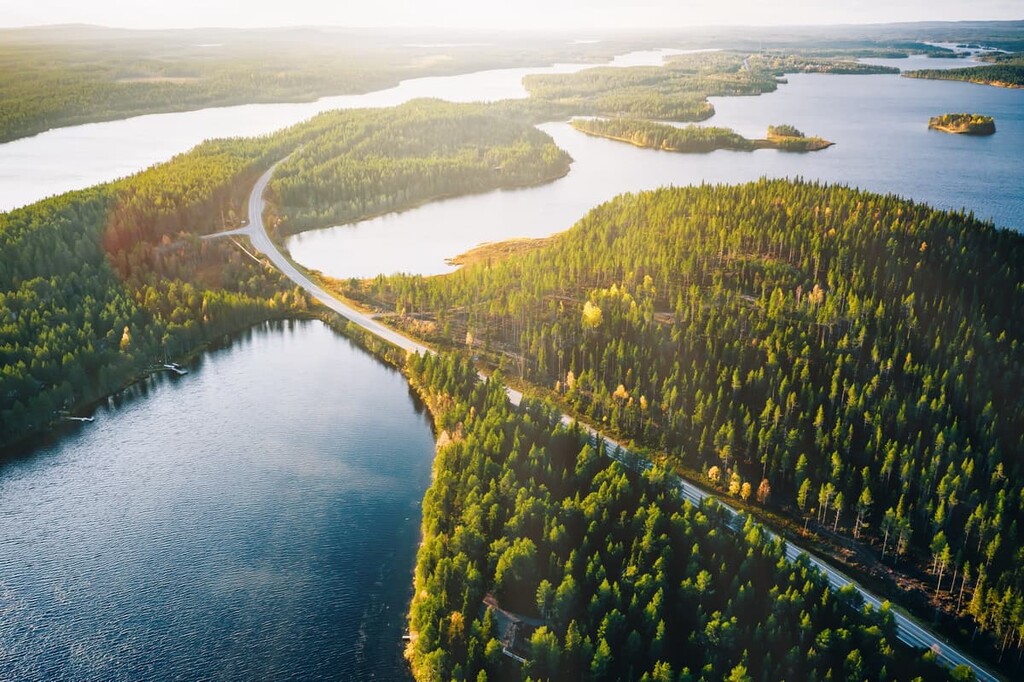
Lapland may seem like a lifeless northern territory compared to the more southerly ones—even Central Finland.
On the one hand, there is really almost nothing that can grow here and there are far fewer animals than what you find in the southern parts of the country. On the other hand, if you look closely, in this "lifeless land," you can find tens, hundreds, and thousands of species.
Lapland is home to low-growing plants as wood cranesbill, northern oak fern, dwarf cornel, currant, bird cherry, wood stitchwort, one-flowered wintergreen, ostrich fern, garden angelica, alpine blue-sow-thistle, and many others.
Additionally, Arctic arnica, marsh saxifrage, and Hudson Bay sedge grow in the swamps and marshes in the region. The rocks in Lapland are usually covered by all kinds of mosses and lichens, too.
From July to November in the same bogs and forests you can pick many edible berries (blueberries, lingonberries, and others) and mushrooms. There are so many berries and mushrooms that you don't even have to look for them. In fact, they are literally just everywhere, for a good breakfast, lunch, and dinner.
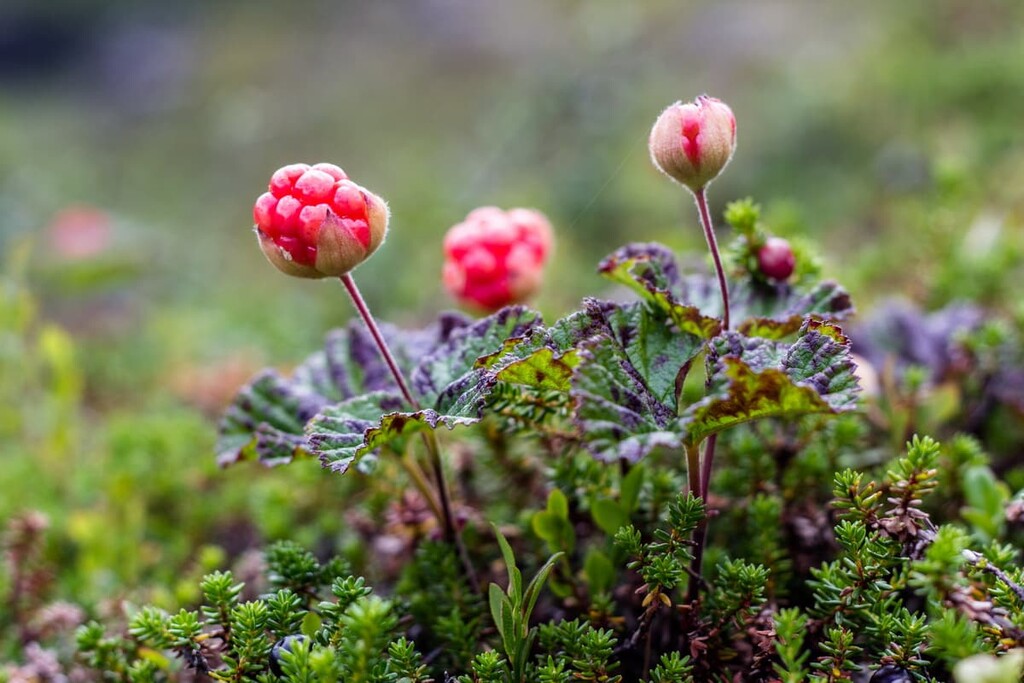
As far as animals go, in addition to reindeer, Lapland is home to moose, elk, brown bear, lynx, foxes, hares, martens, hare, wolverine, and other mammals.
There are also many northern birds that migrate south every year and then return here to create families and raise their young. For example, in Pallas-Yllastunturi National Park alone there are more than 150 species of birds, including large species such as ducks, geese, swans, loons, and others. Birds are as much a symbol of these territories as deer and bear.
Lapland rivers are home to salmon, trout, whitefish, grayling, and other valuable species, not to mention numerous species of lake fish.
Most animals are completely harmless, except maybe the bears, though they often try to avoid humans. However, it is worth remembering that you can meet bears very easily here. This also distinguishes Lapland from, for example, the Alps and other European territories. Lapland is truly wild, where you can wander for weeks without seeing another human being.

Now the most interesting part. The mountains in most of Lapland are low hills or fells with an average height of 500–800 m (1,640–2,624 ft), although earlier—or rather to say, much earlier—about 2 to 3 billion years ago—they were the same height as the Alps and reached 5000 m (16,4040 ft) above sea level.
This ancient mountain range that was once found in Lapland but does not exist today is called the Karelides. It stretched from Lapland further south as far as the provinces of South Karelia and North Karelia: the further south you go, the lower the hills get. In other words, today we can see only the bases of these mountains, which have been eroded away by various geological processes.
But in Lapland, you can also find real mountains. Almost all of them are concentrated on a relatively small piece of land in the very northwest of the region on the border with Norway. There are quite high mountains up to about 1,300 m (4,265) that form the easternmost edge of the Scandinavian Mountains.
Here are the most famous peaks of Lapland you need to know about before you travel to this amazing region:
Halti is the highest peak in Lapland and Finland. It is located in the Scandinavian Mountains on the border with Norway. For this reason, it is the subject of a long-standing dispute between the two nations.
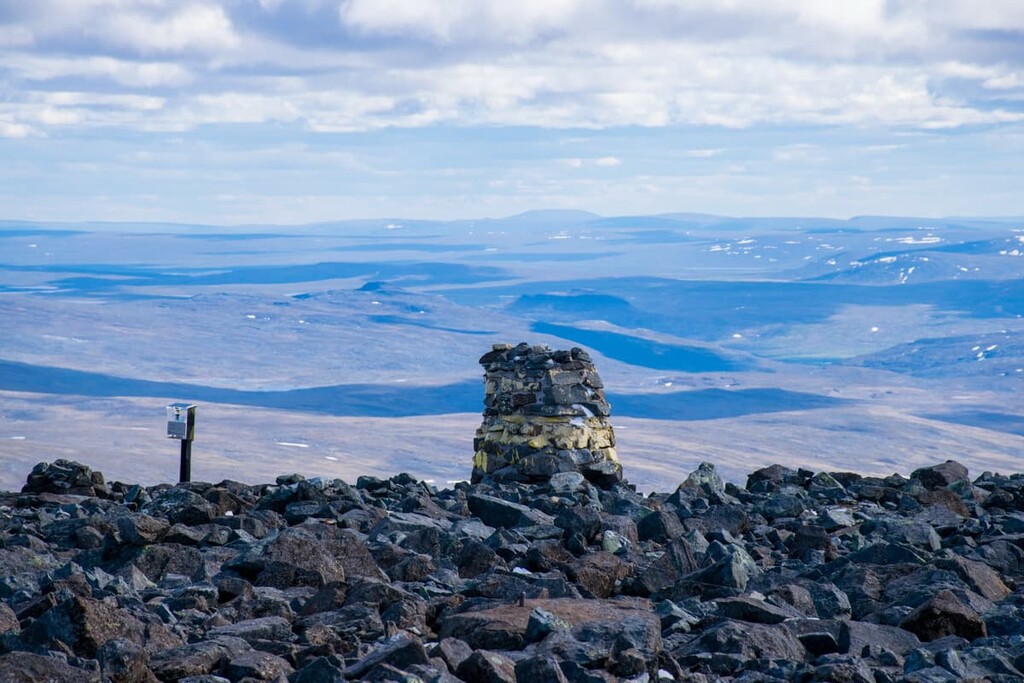
Ritničohkka is the second highest point in Lapland and Finland and it is the highest point that’s located entirely within Finland’s territory. It is also interesting to visit, especially in the winter for skiing, because it has the most extensive area of permanent snow in Finland.
The other highest peaks in Lapland and Finland after Halti and Ridnitšohkka are:

Тaivaskero is the most prominent peak in Lapland and Finland. It is also famous because, at noon on July 6, 1952, the second symbolic Olympic flame of the 1952 Summer Olympics in Helsinki was lit on the peak. The flame was joined with the original flame from Greece a couple of days later.
Morgam-Viipus is the highest point in the entire municipality of Inari, where there is a large Sámi community. If you are going to the land of Sámi, there is no higher place to climb to see it from above than Morgam-Viipus. The visibility is just fantastic as you can see over 100 km (60 mi) away, or in other words, a whole lot of Lapland, from a single spot.
Korvatunturi a the fell located in Urho Kekkonen National Park. According to urban legend, Finnish Santa Claus, who is called Joulupukki in Finnish, lives on that very mountain. Keep in mind that you can go to the fell only with permission because it is located also right on the border with Russia.
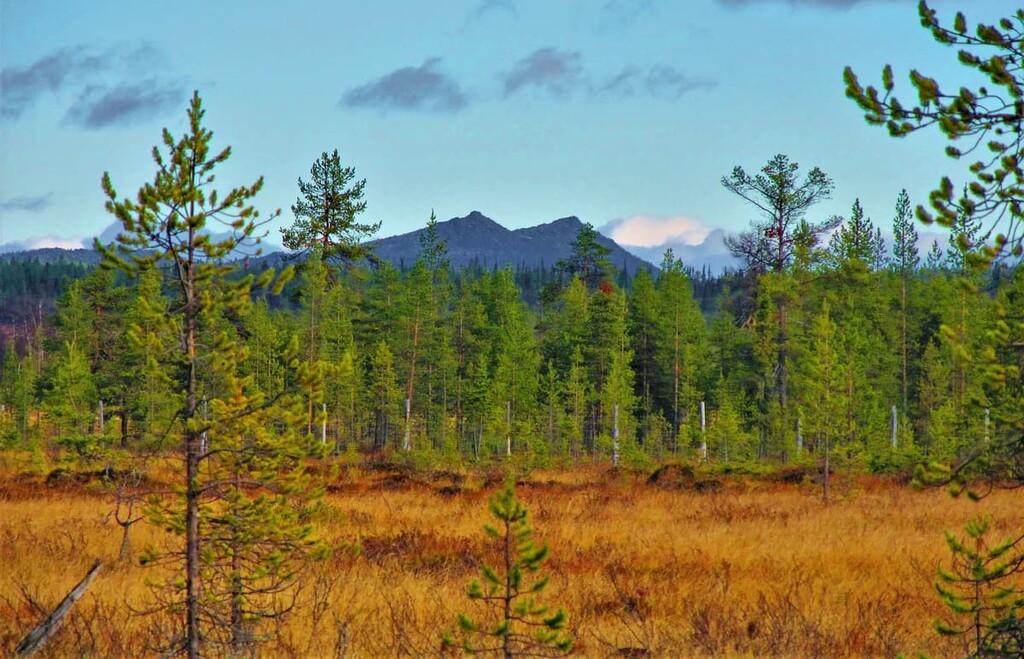
Yllästunturi is a high mountain by Lapland's standards and it is where the highest ski resort in Lapland and Finland is located. There are 55 ski trails of blue, red, and black colors and 26 lifts at the resort. The lowest point is 200 m (656 ft), giving the resort 519 m (1,702 ft) of vertical relief.
Noitatunturi is the highest peak of Pyhä-Luosto National Park and it is located almost in the geographical center of Lapland. At the same time, just a 1.5-hour drive from the capital or the region Rovaniemi. As a result, Noitatunturi is a fun and accessible peak to climb.

It is difficult to choose a particular place for a trip to Lapland: There are too many beautiful and interesting places, and they are very large in area. It is difficult for me to recommend just one place, but I will try to help you find your way.
There are four main types of hiking areas in Finland you can choose for your first trip:
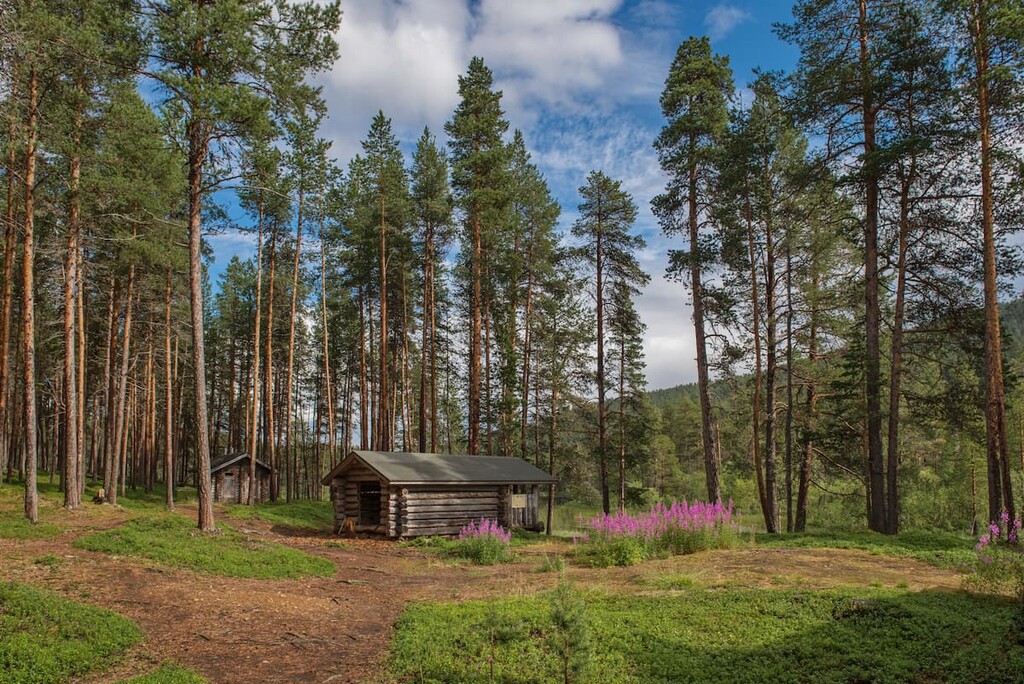
In addition to the short trails of up to 20 km (0.6–1.2 to 12.4 mi) in length in the national parks in Lapland, you can also hike one of the longer trails for up to 5 to 7 days or more.
The best known and most popular trail is in the Oulanka National Park, which is also called the Karhunkierros Trail. It is 82 km (50.9 mi) long, of which about 40 km (24.8 mi) runs along a rough and winding river. The entire trial can be completed in 7 to 8 days.
Other two well-known trails are Hetta-Pallas Trail (50 km / 31 mi, 5-6 days) in Pallas-Yllästunturi National Park, and Pyhä-Luosto Trail (45 km / 27.9 mi, 4-5 days) in Pyhä-Luosto National Park.
Additionally, it’s worth mentioning the Nordkalott Trail or Arctic Trail. This is a trail of around 800 km (497 mi) that goes through the north of Norway, Sweden, and Finland. The Finnish part is "only" 70 km (43.4 mi) long and you can complete it in 6 to 7 days.

For skiing and snowboarding enthusiasts, there are more than 10 ski resorts in Lapland, which are located throughout the region. It is the main area for skiing in the Finland mountains, including the Scandinavian Mountains and Karelides—two major mountain ranges of the country.
The largest ski resort in Lapland and Finland is Ylläs with more than 50 km (31 mi) of slopes and more than 20 ski lifts.
Other major areas for skiing in Lapland with more than 5 km (3 mi) of slopes and more than 5 ski lifts each include the following in descending order of size:
The main ski resort near Rovaniemi, the largest city in Lapland, is Ounasvaara–Rovaniemi, also with more than 5 km (3 mi) of slopes and more than 5 ski lifts.
Check the Lapland ski resorts map as well as the larger Finland ski resorts map in the World Mountain Lifts section of the site. It includes information about open ski lifts / slopes in Lapland in real-time with opening dates and hours. There are also year-round cable cars, funiculars, cog railways, aerial tramways, and all other types of mountain lifts.
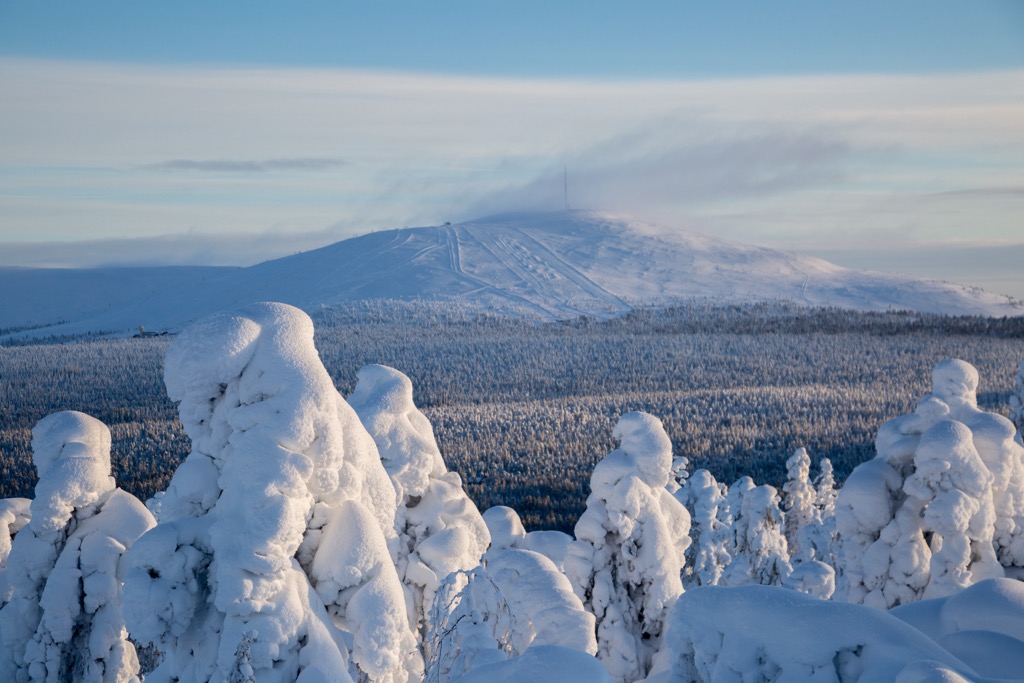
As an author and also a traveler myself, I often have to look to various official sources for reliable and trustworthy information about a region. In some countries, regions, and cities, the available information is quite limited, but in Finland, the available tourist information is simply great (in most cases).
Before you go to Lapland, be sure to check out the travel portals Lapland.fi and the section on Finland's VisitFinland.com, as well as MyHelsinki.fi. While in Rovaniemi, visit the main tourist office, which is considered to be "a home for the services of over 200 local service providers":
Rovaniemi Tourist Information
Koskikatu 12, 96200, Rovaniemi, Finland
+358 (0) 16 346 270
+358 (0)40 829 0676 (also WhatsApp)
In case of emergency, 112 is the single phone number of the Emergency Responder Center Agency in Finland for ambulance, fire, and police calls. Read more about how to use this number.
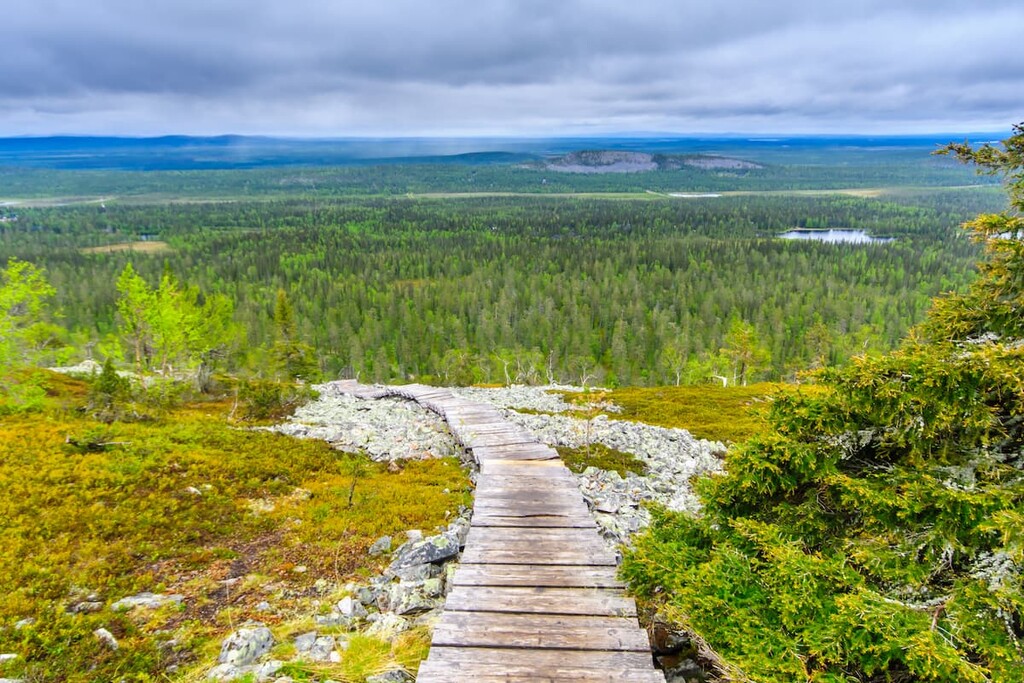
Hiking and other outdoor activities in Lapland differ from the rest of the world, and in some cases from the rest of Finland, because of the different kinds of accommodation you can find in the region. Here are some of your many accommodation options when hiking in Lapland.
These are free wilderness huts with shared rooms for 4 to 10 people. Open wilderness huts are scattered all over Lapland and you can stay in them for a night or two. Each hut will have a place to sleep, a place to cook, and sometimes even a sauna.
You can find such huts in almost all of the national parks and wilderness areas of Lapland. For example, in the most popular park of Finland, Pallas-Yllästunturi, there are 22 such huts (but in other parks, they are fewer, from 3–5 to about 10). So, at the peak tourist season, it is better to carry a tent with you in case all the huts are occupied.
Since you won’t find such huts in the central and southern parts of Finland, don't miss your chance to visit one when in Lapland.
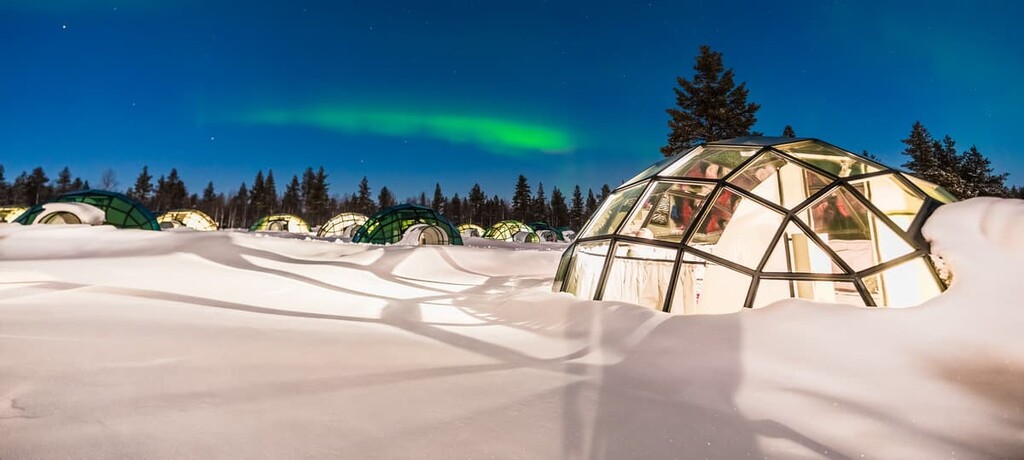
There are also two other types of huts: reservable wilderness huts with a bed for €10–12 per person per night, and rental huts for €50–100 per person for 24 hours. Some such huts are called Lapp huts and are built in the form of traditional Sámi homes, similar to pyramid-shaped tents covered with reindeer skins.
But the easiest (and least expensive) way to sleep in a national park or other area in Lapland is a tent. In national parks, tents can only be pitched in designated areas. Meanwhile, in wilderness areas, you can camp anywhere. In some places in parks, you can make a fire, but this is not universally true. However, you can make a fire nearly everywhere in the wilderness areas.
Before and after your hike, you'll have no trouble finding basic lodging options like hotels, campgrounds, and other similar sites in any town in Lapland that I'll discuss in the next section.
In particular, the cottage rentals in the region that are located by the lake or in the woods with a sauna are especially popular in Lapland and Finland. I highly recommend trying a sauna with a dip in an icy lake—doing so will change your life.
As I said in the beginning, Lapland is the most sparsely populated area of Finland, with a total population of the country of only 180,000 people. Nevertheless, there are about a dozen relatively large cities in Lapland, which are convenient and easy to get to from Helsinki and from where it is convenient to continue your journey through the region.
Here’s a quick look at some of the biggest cities and towns in Lapland:
Rovaniemi is the largest, the most populated, and the most important city in Lapland. It is located in the southwestern part of the region where almost all trips to Lapland start and end. The city was founded in 1960 and, today, Rovaniemi is home to about 63,618 people (2021).
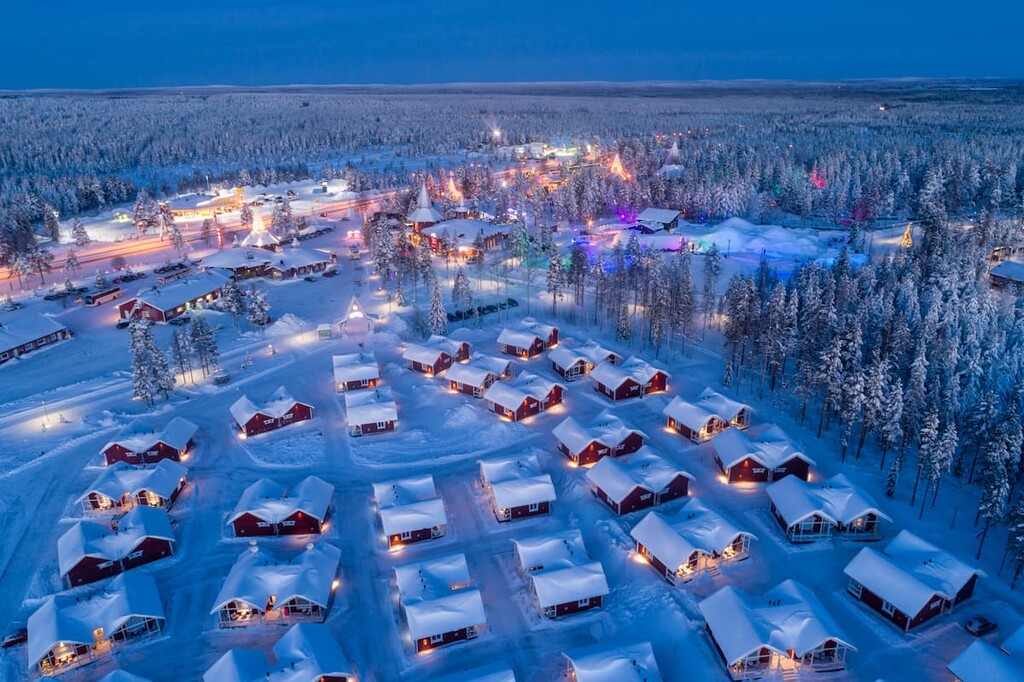
The three main attractions of the city include:
Official tourist site: VisitRovaniemi.fi.
Kemi is the third-largest city in Lapland. It is located on the shores of the Gulf of Bothnia on the Baltic Sea. Therefore it is an important port city. The city is older than Rovaniemi as it was founded in 1869. Today, 20,331 people live here as of 2021—the same number as in Tornio, the second-largest city in Lapland, located to the north of the Gulf of Bothnia
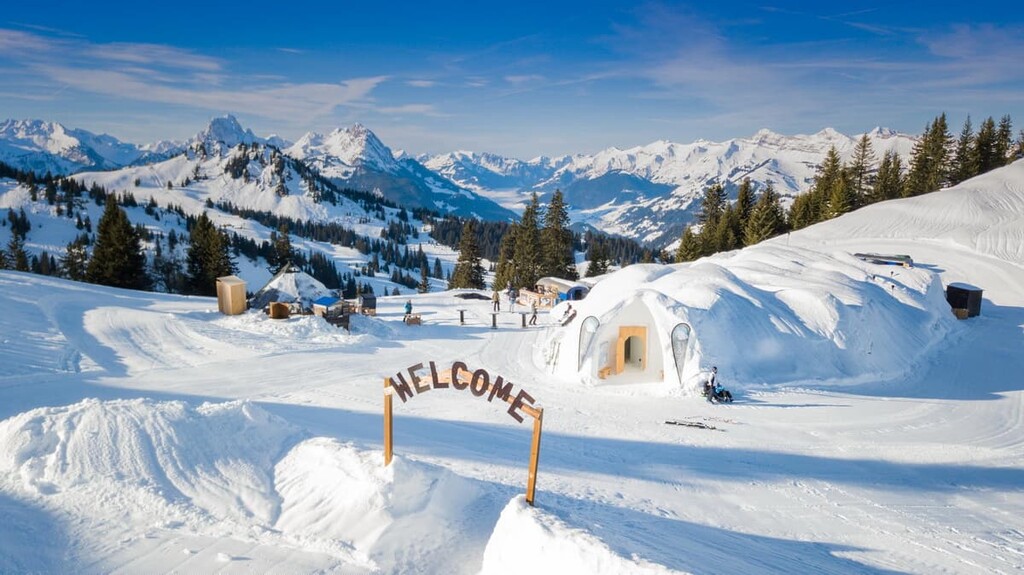
The city's three main attractions include:
Official tourist site: Kemi.fi.
Ivalo is a small but important village located in eastern Lapland. There is a regional airport in Ivalo, so you can also get here by direct flight from Helsinki, making it a convenient starting point if you are going to the far north. The city is quite old, too, and it has a population of 3,007 people as of 2017.
The city's three main attractions include:
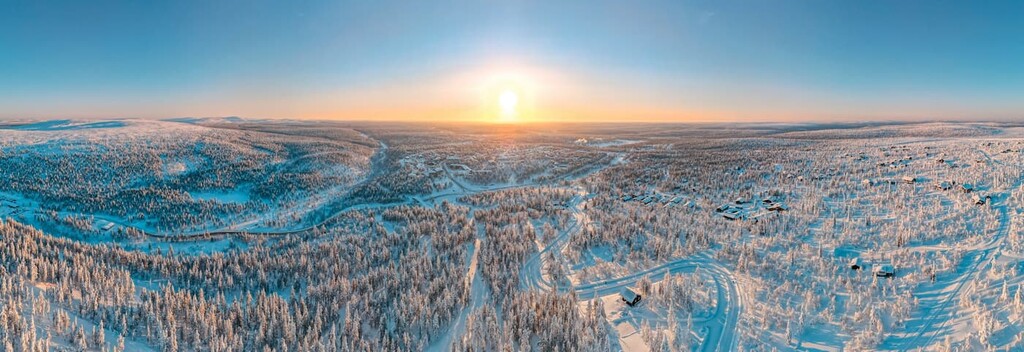
Official tourist site: Inarisaariselka.fi.
If you don’t go the one of the abovementioned cities, there are other important towns in Lapland for you to visit. Some of the towns with more than a thousand inhabitants include:
When you study the map of Lapland in PeakVisor as you plan your future trip, focus your efforts on planning an adventure from one of these towns, to help orient yourself in the wilderness.
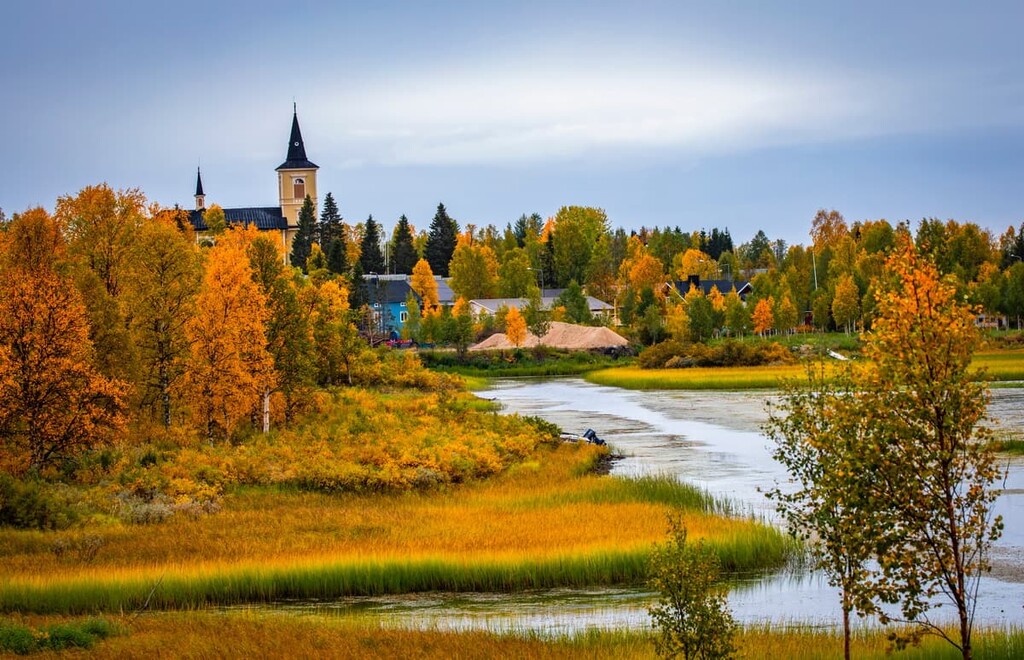
Explore Lapland with the PeakVisor 3D Map and identify its summits.








